Diabetes is a life-threatening metabolic disorder that has become very common in modern life. It is generally caused by poor dietary habits, and lack of physical exercise. Modern-day stress and anxiety only aggravate this condition. Besides medication addressing the root cause, which is lifestyle modification should be of the first and foremost importance. We often hear this adage that life is a rat race, and, to be honest, in today’s modern world it is true. We are so busy with everyday work and other things that we often forget to take care of ourselves. But when you are diagnosed with Type 2 diabetes then it is a sign that you have to take some time to keep yourself healthy.
One of the key aspects of managing diabetes is exercise and taking care of our mental health in addition to a healthy diet. And, what could be a better way to achieve both than yoga. Let’s understand that yoga for diabetic patients is highly beneficial in reducing its complications.
Yoga and Diabetes
Yoga is a great method of creating harmony between mind, body, and soul. It helps in managing a variety of lifestyle disorders that also includes type 2 diabetes. Yoga stimulates your internal organs which improves your metabolism. It is a great exercise that focuses on strength, flexibility, and your core which helps you burn calories as well as on your internal organs. Yoga also mitigates stress and lets you relax. It is also a great form of exercise for people who are weak in their joints. There are certain yoga asanas for diabetes that can help you in lowering your blood sugar level and blood pressure, which is great for diabetic patients.
Health benefits of yoga
Yoga is derived from the Sanskrit word “Yuj”, which means unite. It is a holistic practice that combines, yoga asana, breathing exercises, and meditation.
Some benefits of yoga for sugar patients:
- It helps in mitigating stress levels
- Aid in lowering blood pressure
- Improves your digestive system
- It rejuvenates your pancreatic cells
- Enhance your muscle endurance
- It promotes weight loss
- It improves your balance that reduces the chances of falling
- Promote better control of blood sugar levels
- Promotes healthy heart
Best Yoga Asanas for Diabetes
Keep on reading to learn some simple yet effective yoga asanas to control diabetes with pictures that will help you in the better management of diabetes.
1. Upward-Facing Dog
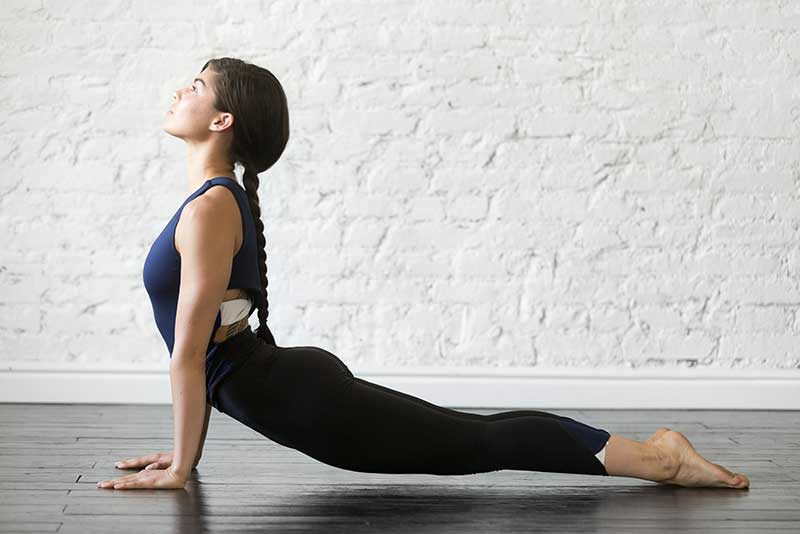
How to Do:
- Lie on your belly with legs straight and the tops of your feet on the mat.
- Bend your elbows and place your palms near your lowest rib cage.
- Inhale deeply, press firmly onto your palms, and lift your upper torso, lower back, and hips off the mat.
- Ensure your wrist, shoulder, and neck are aligned to avoid strain.
- Hold for 5-10 breaths, then gently unwind.
Benefits:
- Strengthens quadriceps, triceps, and spinal extensors.
- Lowers blood pressure.
- Improves circulation.
- Promotes weight loss.
- Massages abdominal muscles, reducing blood sugar levels.
Precautions:
- Avoid if you have carpal tunnel syndrome or a back injury.
- Maintain proper alignment to prevent strain on your wrists and neck.
2. Ardha Matsyendrasana
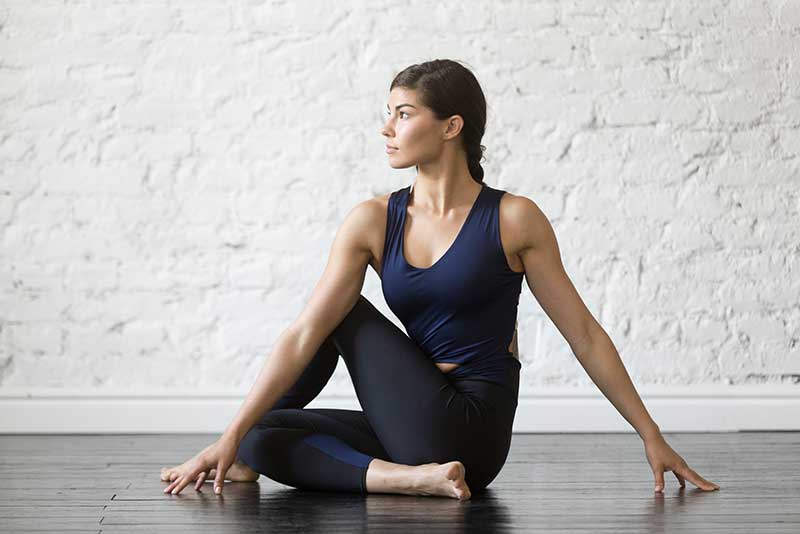
How to Do:
- Sit on your mat with your back straight and legs stretched out.
- Bend your left leg, placing your heel beside your right hip.
- Cross your right leg over your left knee.
- Place your left hand on the right knee and your right hand behind your hips.
- Twist your waist, shoulders, and neck to the right, keeping your spine erect.
- Hold for 5-10 breaths, then repeat on the other side.
Benefits:
- Massages internal organs.
- Makes the spine supple.
- Boosts oxygen supply to the lungs.
- Beneficial for the pancreas and liver, promoting insulin production.
Precautions:
- Avoid if you have a spinal disc injury or recent abdominal surgery.
- Twist gently to avoid strain.
3. Seated Forward Bend
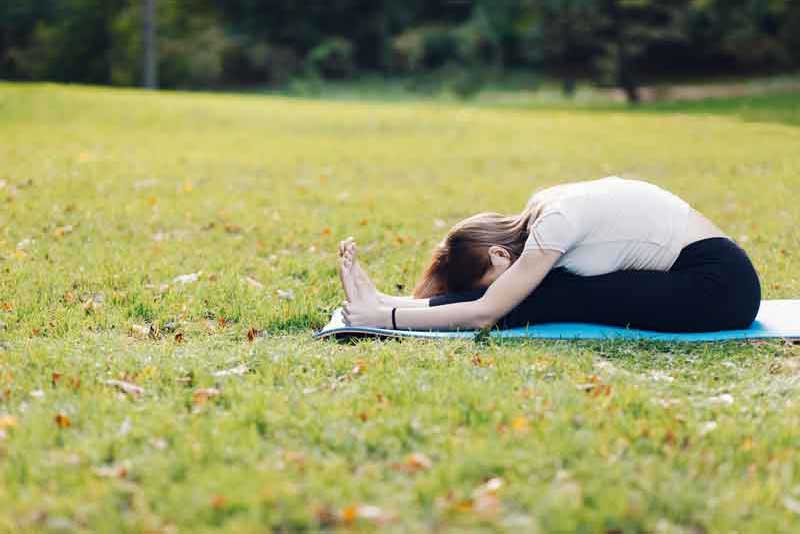
How to Do:
- Sit with legs stretched forward.
- Inhale and stretch your arms overhead.
- Exhale, bending your upper torso to touch your toes.
- Rest your forehead on your knees, close your eyes, and breathe.
- Bend knees slightly to avoid straining your lower back.
- Hold for 5-6 breaths, then gently unwind.
Benefits:
- Relieves stress and anxiety.
- Lowers blood pressure.
- Tones pelvic muscles.
Precautions:
- Avoid if you have a lower back injury.
- Bend your knees if necessary to avoid strain.
4. Kapalbhati Pranayama
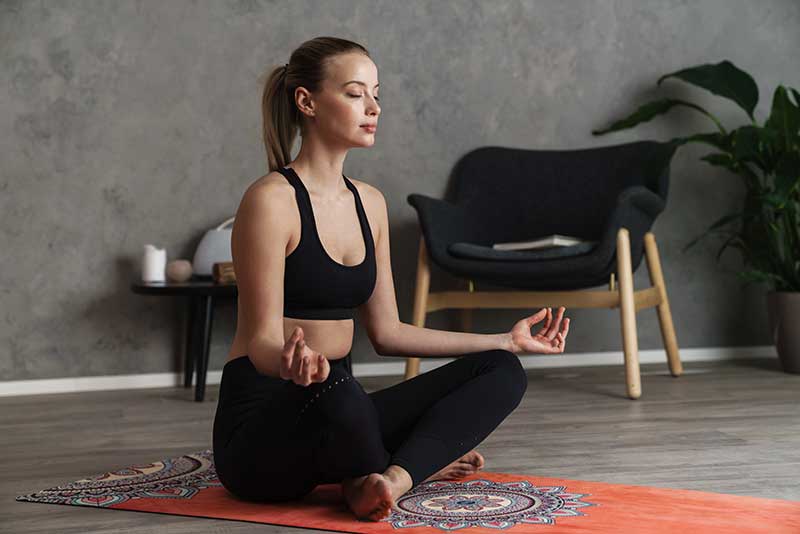
How to Do:
- Sit in Sukhasana with a straight back, hands on knees.
- Inhale deeply, then exhale forcefully, pulling your stomach towards your spine.
- Let the breath flow into your lungs naturally as you relax.
- Repeat for 20 breaths, rest, and do 2-3 more rounds as comfortable.
Benefits:
- Enhances metabolism.
- Reduces weight.
- Stimulates abdominal muscles.
- Promotes insulin production.
Precautions:
- Pregnant women, menstruating women, and those with recent abdominal surgery, pacemakers, or high blood pressure should avoid Kapalbhati or practice under expert guidance.
5. Supine Spinal Twist
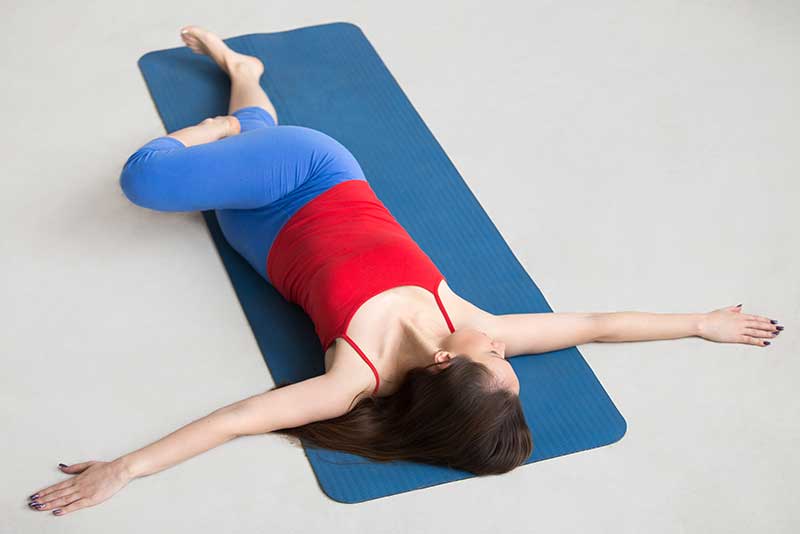
How to Do:
- Lie on your back with arms stretched out in a “T” shape.
- Bend your knees towards your chest, then move them to the left.
- Turn your neck to the right, placing your left hand on your knees.
- Relax, breathe for a few seconds, then repeat on the other side.
Benefits:
- Enhances blood flow to digestive organs.
- Massages abdominal organs.
- Controls blood glucose levels.
- Relieves back, hip, and spine pain and stiffness.
Precautions:
- Avoid if you have a back or hip injury.
- Move gently to avoid overstretching.
6. Child’s Pose
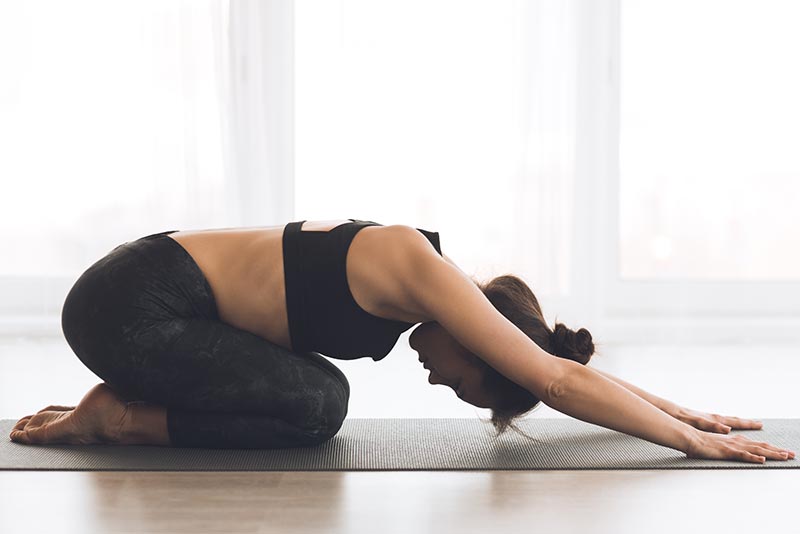
How to Do:
- Kneel on the mat with your big toes touching and knees apart.
- Sit back on your heels and extend your arms forward, lowering your forehead to the mat.
- Breathe deeply and hold for 1-3 minutes.
Benefits:
- Relieves stress and fatigue.
- Gently stretches the hips, thighs, and ankles.
- Calms the mind.
Precautions:
- Avoid if you have knee injuries or severe back problems.
7. Bridge Pose
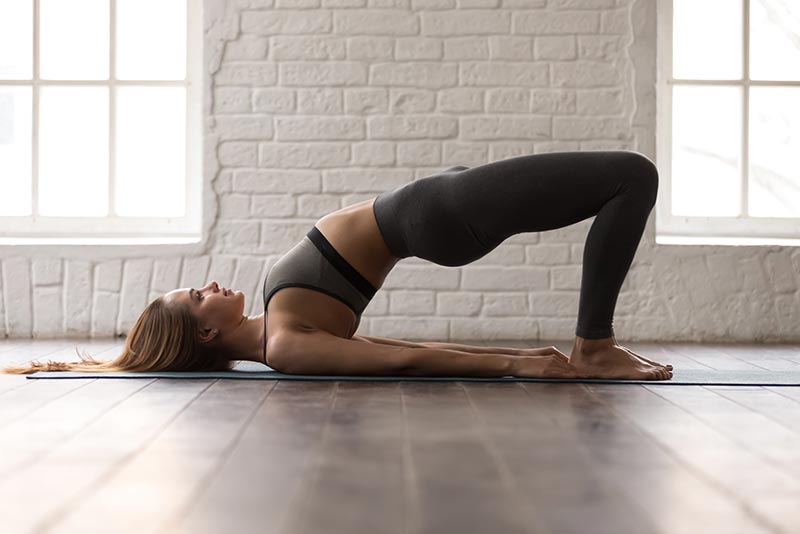
How to Do:
- Lie on your back with knees bent and feet flat on the floor, hip-width apart.
- Place your arms at your sides, palms down.
- Inhale and lift your hips toward the ceiling, pressing your feet and arms into the mat.
- Hold for 5-10 breaths, then lower slowly.
Benefits:
- Strengthens the back, buttocks, and hamstrings.
- Stimulates abdominal organs.
- Improves blood circulation.
Precautions:
- Avoid if you have neck or shoulder injuries.
- Keep your neck relaxed to prevent strain.
8. Legs Up the Wall Pose
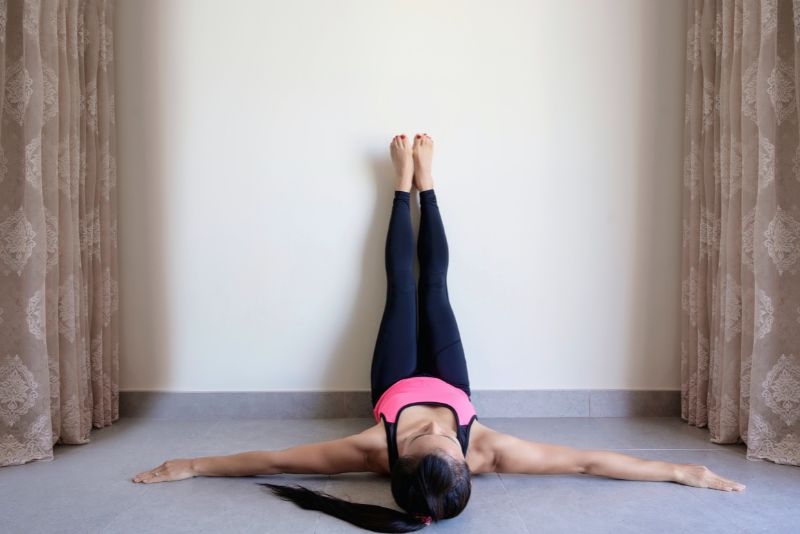
How to Do:
- Sit next to a wall and lie on your back, extending your legs up the wall.
- Adjust your position so your hips are close to the wall and your legs are vertical.
- Relax your arms at your sides and breathe deeply for 5-10 minutes.
Benefits:
- Reduces swelling and fatigue in the legs.
- Promotes relaxation.
- Improves circulation.
Precautions:
- Avoid if you have serious back or neck issues.
- Use a cushion under your hips if needed for support.
9. Cat-Cow Pose
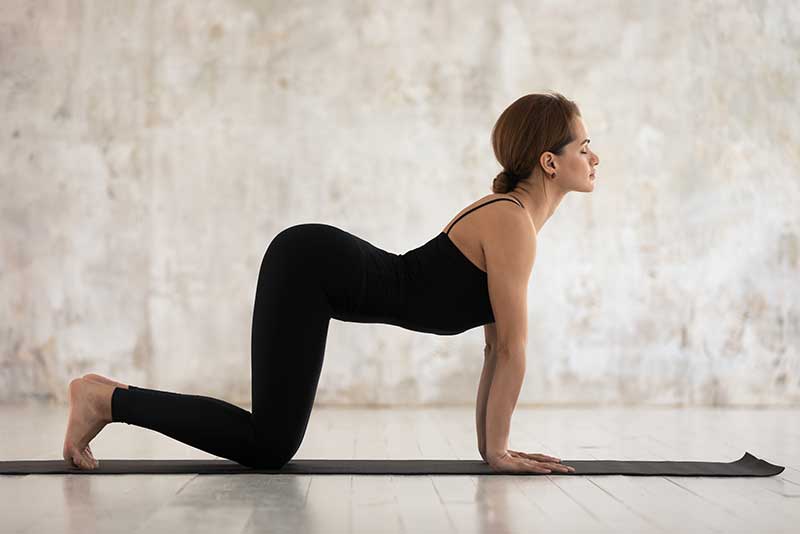
How to Do:
- Start on your hands and knees in a tabletop position.
- Inhale, arch your back and lift your head and tailbone (Cow Pose).
- Exhale, round your back and tuck your chin toward your chest (Cat Pose).
- Repeat for 5-10 breaths, moving smoothly with your breath.
Benefits:
- Improves spine flexibility.
- Massages abdominal organs.
- Reduces stress.
Precautions:
- Move gently if you have wrist, knee, or back issues.
- Use padding under your knees if necessary.
10. Bow Pose

How to Do:
- Lie on your stomach with your arms at your sides.
- Bend your knees and reach back to hold your ankles.
- Inhale, lift your chest and thighs off the mat, pulling your ankles toward your shoulders.
- Hold for 5-10 breaths, then release.
Benefits:
- Strengthens back muscles.
- Stimulates abdominal organs.
- Improves posture.
Precautions:
- Avoid if you have neck, back, or shoulder injuries.
- Move slowly to avoid strain.
11. Cobra Pose
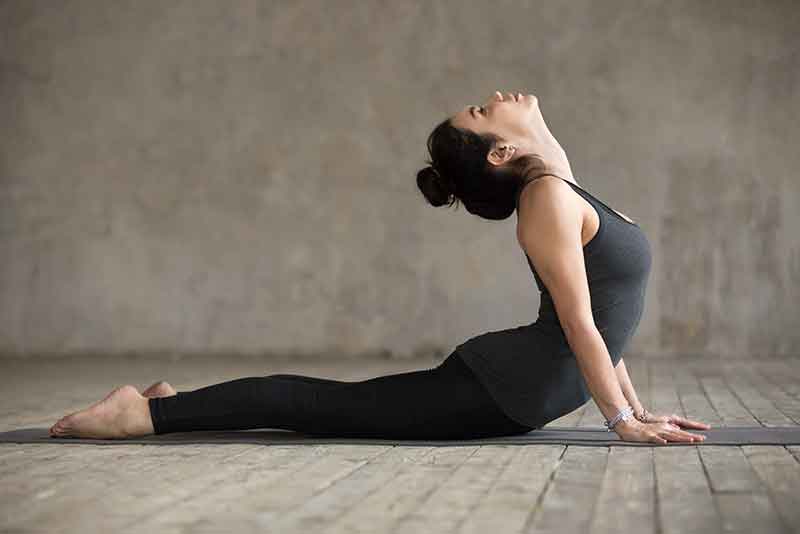
How to Do:
- Lie on your stomach with your hands under your shoulders.
- Inhale, press into your hands, and lift your chest off the mat, keeping your elbows slightly bent.
- Hold for 5-10 breaths, then lower gently.
Benefits:
- Strengthens the spine.
- Opens the chest.
- Stimulates abdominal organs.
Precautions:
- Avoid if you have back injuries or carpal tunnel syndrome.
- Keep your neck aligned to avoid strain.
References
https://nopr.niscpr.res.in/handle/123456789/9348

Mr. Vijay Kumar Pandey is an eminent Yoga teacher with 15 years of experience. He excelled himself in Iyengar Yoga under the guidance of revered master BKS Iyengar Read More



